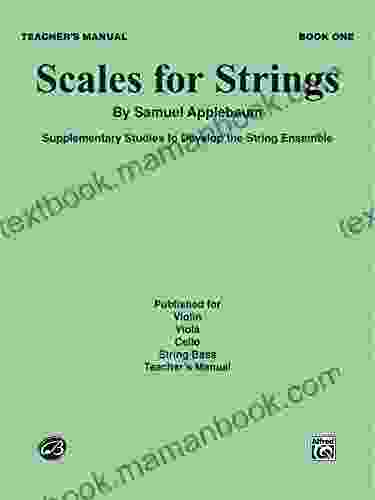Beethoven Cello Sonata No. 5 in D Minor, Sheet Music Score, History, and Analysis

Ludwig van Beethoven's Cello Sonata No. 5 in D Minor, Op. 102 No. 2, is one of the most celebrated works in the cello repertoire. Written in 1815, it is a testament to Beethoven's genius and his ability to create music that is both beautiful and profound.
This article provides a detailed overview of the Cello Sonata No. 5, including its history, structure, and interpretation. We will also provide a link to the full sheet music score so that you can study and perform this magnificent work.
Beethoven composed the Cello Sonata No. 5 in 1815, during a period of great personal and professional turmoil. He was struggling with deafness, financial problems, and a broken heart. Despite these challenges, Beethoven produced some of his most enduring works during this time, including the Cello Sonata No. 5.
4.2 out of 5
| Language | : | English |
| File size | : | 8920 KB |
| Screen Reader | : | Supported |
| Print length | : | 28 pages |
| Lending | : | Enabled |
| Item Weight | : | 1.08 pounds |
| Dimensions | : | 5.47 x 1.18 x 7.87 inches |
The sonata was dedicated to Beethoven's friend and patron, Archduke Rudolph of Austria. Rudolph was a talented cellist, and Beethoven had often played chamber music with him. It is likely that Beethoven wrote the sonata with Rudolph in mind, and that he premiered the work with him.
The Cello Sonata No. 5 was published in 1817 and was immediately hailed as a masterpiece. The work has been performed and recorded by countless cellists over the years, and it remains one of the most popular and beloved pieces in the cello repertoire.
The Cello Sonata No. 5 is in three movements:
- First Movement: Allegro con brio
- Second Movement: Adagio con variazioni
- Third Movement: Allegro
The first movement is in sonata form, with a slow . The main theme is presented in the cello, and the piano provides a simple accompaniment. The second theme is more lyrical and is played by the piano. The development section is extensive and features a variety of contrapuntal techniques. The recapitulation is fairly straightforward, and the movement ends with a brilliant coda.
The second movement is a set of variations on a simple theme. The theme is presented in the cello, and the piano provides a simple accompaniment. The first variation is a simple restatement of the theme. The second variation is more elaborate, and the piano provides a more active accompaniment. The third variation is even more elaborate, and the cello and piano engage in a complex dialogue. The fourth variation is a return to the simplicity of the theme, and the movement ends with a short coda.
The third movement is in rondo form. The main theme is presented in the cello, and the piano provides a simple accompaniment. The main theme is repeated several times throughout the movement, with contrasting episodes in between. The episodes are more lyrical and provide a contrast to the energetic main theme. The movement ends with a brilliant coda.
The Cello Sonata No. 5 is a demanding work to perform. It requires a cellist with a strong technique and a deep understanding of the music. The pianist must also be a skilled accompanist and be able to provide a solid foundation for the cellist.
The first movement is the most technically demanding of the three movements. The cellist must be able to play the fast passages with accuracy and precision. The pianist must be able to provide a solid accompaniment and support the cellist in the more difficult passages.
The second movement is more lyrical and introspective. The cellist must be able to bring out the beauty of the theme and the variations. The pianist must be able to provide a sensitive accompaniment and create a mood of intimacy.
The third movement is a return to the energy and excitement of the first movement. The cellist must be able to play the fast passages with accuracy and precision. The pianist must be able to provide a solid accompaniment and support the cellist in the more difficult passages.
The Cello Sonata No. 5 is a work of great beauty and depth. It is a challenging work to perform, but it is well worth the effort. The sonata is a testament to Beethoven's genius and his ability to create music that is both beautiful and profound.
You can download the full sheet music score for Beethoven's Cello Sonata No. 5 in D Minor here:
[Link to sheet music score]
Beethoven's Cello Sonata No. 5 in D Minor is one of the most celebrated works in the cello repertoire. It is a work of great beauty and depth, and it is a testament to Beethoven's genius. The sonata is a challenging work to perform, but it is well worth the effort. If you are a cellist, I encourage you to learn and perform this work. It is a piece that will stay with you for a lifetime.
4.2 out of 5
| Language | : | English |
| File size | : | 8920 KB |
| Screen Reader | : | Supported |
| Print length | : | 28 pages |
| Lending | : | Enabled |
| Item Weight | : | 1.08 pounds |
| Dimensions | : | 5.47 x 1.18 x 7.87 inches |
Do you want to contribute by writing guest posts on this blog?
Please contact us and send us a resume of previous articles that you have written.
 Top Book
Top Book Novel
Novel Fiction
Fiction Nonfiction
Nonfiction Literature
Literature Paperback
Paperback Hardcover
Hardcover E-book
E-book Audiobook
Audiobook Bestseller
Bestseller Classic
Classic Mystery
Mystery Thriller
Thriller Romance
Romance Fantasy
Fantasy Science Fiction
Science Fiction Biography
Biography Memoir
Memoir Autobiography
Autobiography Poetry
Poetry Drama
Drama Historical Fiction
Historical Fiction Self-help
Self-help Young Adult
Young Adult Childrens Books
Childrens Books Graphic Novel
Graphic Novel Anthology
Anthology Series
Series Encyclopedia
Encyclopedia Reference
Reference Guidebook
Guidebook Textbook
Textbook Workbook
Workbook Journal
Journal Diary
Diary Manuscript
Manuscript Folio
Folio Pulp Fiction
Pulp Fiction Short Stories
Short Stories Fairy Tales
Fairy Tales Fables
Fables Mythology
Mythology Philosophy
Philosophy Religion
Religion Spirituality
Spirituality Essays
Essays Critique
Critique Commentary
Commentary Glossary
Glossary Bibliography
Bibliography Index
Index Table of Contents
Table of Contents Preface
Preface Introduction
Introduction Foreword
Foreword Afterword
Afterword Appendices
Appendices Annotations
Annotations Footnotes
Footnotes Epilogue
Epilogue Prologue
Prologue Marc Cameron
Marc Cameron Ron Nash
Ron Nash Telannia Norfar
Telannia Norfar Tom Vander Ark
Tom Vander Ark Gordon Doherty
Gordon Doherty Lois Beardslee
Lois Beardslee Alex Shaw
Alex Shaw Neshanda Whitehead
Neshanda Whitehead Daniel Marciano
Daniel Marciano Brad Berger
Brad Berger Disney Book Group
Disney Book Group Lh Nicole
Lh Nicole Joanne B Freeman
Joanne B Freeman Shepherd Mead
Shepherd Mead Jessie Inchauspe
Jessie Inchauspe Enlightened Anonymous
Enlightened Anonymous Roberto Calas
Roberto Calas Jean Wyrick
Jean Wyrick Joanne Samuel Goldblum
Joanne Samuel Goldblum Wendy Lawson
Wendy Lawson
Light bulbAdvertise smarter! Our strategic ad space ensures maximum exposure. Reserve your spot today!

 Brian BellWinter Trees by Sylvia Plath: A Poetic Exploration of Despair, Isolation, and...
Brian BellWinter Trees by Sylvia Plath: A Poetic Exploration of Despair, Isolation, and... Jamal BlairFollow ·5.8k
Jamal BlairFollow ·5.8k Jarrett BlairFollow ·16.9k
Jarrett BlairFollow ·16.9k Henry Wadsworth LongfellowFollow ·6.7k
Henry Wadsworth LongfellowFollow ·6.7k Rod WardFollow ·16.2k
Rod WardFollow ·16.2k Jim CoxFollow ·11.4k
Jim CoxFollow ·11.4k Bryce FosterFollow ·6.5k
Bryce FosterFollow ·6.5k Matt ReedFollow ·7.7k
Matt ReedFollow ·7.7k Edward ReedFollow ·7.7k
Edward ReedFollow ·7.7k

 Forrest Reed
Forrest ReedHulusi Darende's Poems: Unraveling the Lyrical Tapestry...
: A Journey into the Heart of Sufi...

 Gabriel Blair
Gabriel BlairAct of Terror: A Jericho Quinn Thriller
In the heart-pounding...

 Zadie Smith
Zadie SmithScales for Strings Teacher Manual: A Comprehensive Guide...
Scales are fundamental building blocks of...

 Hugo Cox
Hugo CoxMermaid (NHB Modern Plays) Polly Teale
The Mermaid NHB Modern Plays series, a...
4.2 out of 5
| Language | : | English |
| File size | : | 8920 KB |
| Screen Reader | : | Supported |
| Print length | : | 28 pages |
| Lending | : | Enabled |
| Item Weight | : | 1.08 pounds |
| Dimensions | : | 5.47 x 1.18 x 7.87 inches |













